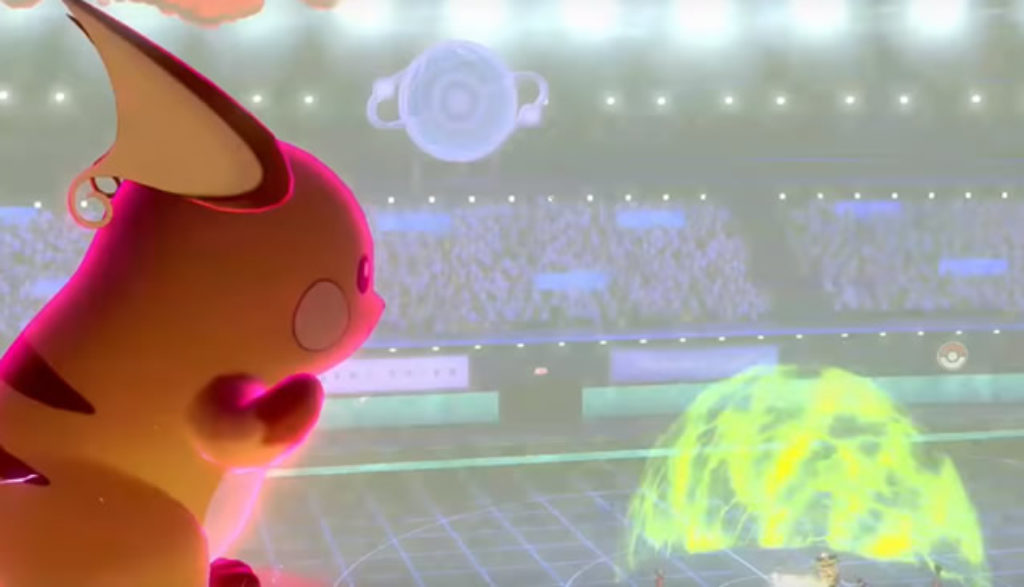
After 23 years of cranking out generation after generation of Pokémon video games, you’d think that there couldn’t possibly be anything left to add to one of these little creature-catching romps. I mean, they are what they are, so just keep following that winning formula, right?
Wrong.
The latest Pokémon tandem has all the cute critters and send-them-into-battle charm fans of the franchise have come to expect. But these two games’ designers aren’t resting on their laurels here. Pokémon Sword and Pokémon Shield (two essentially mirror-image games with exclusive Pokémon variants) are packed to the Magikarp gills with improvements. In fact, they may well be among the best gotta-catch-‘em-all entries you’ve ever played.
OK, as I mentioned the basic idea here is pretty familiar: You start off as a young Pokémon trainer who gets to pick from one of three little Poké starters and then heads off across the land to capture and train up a full team of these colorful “pocket monsters.” You must successfully complete eight Pokémon gym challenges, and eventually you’ll earn the honor of being dubbed a Champion and Pokémon master. As for the games’ changes, well, they show up in all the pocket monster nuts and bolts that have been tweaked and retuned here.
One of the first things that young gamers will oooh and ahhh about is something called Pokémon Dynamaxing. It seems that in the Galar region—the Great Britain-like island where this game takes place—special power-rich areas allow Pokémon trainers to pump up their creatures to about 100 times their normal size. And so the leaders of Galar built big ol’ stadiums on those power spots so that Gym challengers can show off their’ gigantic Pokémon’s moves in front of thousands of cheering spectators. It’s a nice, flashy, super-move addition to the game’s Poké-vs.-Poké fun.
The real plus to these new games, though, is the smart streamlining of gameplay, a feature that’s wisely added in for the sake of young and old. For those who have played lots of these games, for instance, the AI is designed to intuitively let you skip hearing all of their tutorial details. If you fully understand that a water-type creature has an advantage over a fire-type in battle, you simply need to say yep when a character asks if you know how things work. And if you step up and start chucking out Pokéballs to capture a new creature, the game doesn’t even bother asking if you understand how that side of things goes.
Capturing Pokémon is made easier, too. Instead of wandering through the tall grass and encountering some random creature like a mysterious landmine (sometimes to the tune of meeting the same Oddish or Zubat a gazillion times) you can see the wild critters as they peacefully mull about, picking and choosing which one you’ll face. They’ll come running your way if you’re making too much noise, but generally, if you don’t touch them you don’t have to fight them.
How do you level your guys ups then, if it’s not through constant battles? Ah, that’s another nice tweak.
Pokémon Sword and Shield provide a couple of special terrains in something called the Wild Area. At first those flat or hilly stretches look like bland patches of grassland and desert sand. But they’re rife with all sorts of Poké. They’re also home to Pokémon dens: small holes in the ground surrounded by a short wall of rocks.
And if there’s a beam of power radiating up from these dens, then trainers can jump in to be part of a Max Raid battle against a wild Dynamaxed Pokémon in that subterranean lair. (You can have some local, online-connected friends jump in to help you with the battle or the game will choose three random AI trainers to help.)
These Max Raids are always fun and often challenging. And you can also capture some interesting creatures when you win. But more important is the loot you pull out of the den upon victory. There are Rare Candies and various sized Exp Candies (ranging from XS to XL) that give you the ability to quickly level up your crew of Poké without the need for excessive grinding through scores of repeated battles. Not only that, but if you need the specific services of a weak Pokémon that you stored away in your Pokébox several Gym stops earlier, you can quickly level him up to speed with the rest of your current team.
The Wild Areas are a very nice addition that you can quickly travel to at any point in the game. And instead of spending hour after hour searching and grinding, you can invest in short stretches in preparation and Max Raids and then head back to the Gym challenge fun.
It’s a win-win for beginners and for old Poké pros, too. And on top of those things, there are lots of new Pokémon to catch; shiny variants to hunt; a new group of troublesome human thugs to send packing; some other battling mechanics to enjoy; and some nice lessons about friendship and the benefit of perseverance.
Any added problems? No, not really. In fact, during the 30 to 40 total hours of story play, pretty much all of the past games Eastern-tinged spirituality has been stripped away. Your captured, low-level critters still “evolve” into another, more powerful species in the course of the game. But even that is treated as little more than a natural part of the Pokémon lore.
So if you’re one of those fans who’ve, uh, gotta play ’em all, you’ll be hard pressed to find a reason not to do so here.

After spending more than two decades touring, directing, writing and producing for Christian theater and radio (most recently for Adventures in Odyssey, which he still contributes to), Bob joined the Plugged In staff to help us focus more heavily on video games. He is also one of our primary movie reviewers.